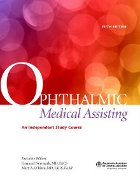Assistants are a critical component of just about any medical office because they are responsible for performing important tasks associated with patient care. An individual who is employed by an establishment that provides ophthalmic care to the public can expect to work with doctors, optometrists, and administrative personnel. Those who intend to pursue this profession are well-advised to consider the various factors that might impact the size of the ophthalmic assistant salary before beginning the job search process.
Common Ophthalmic Assistant Job Responsibilities
The ophthalmic specialty is a unique branch of the medical industry that evaluates and manages a wide variety of eye conditions. While many aspects of patient care must be performed by a licensed provider, there are several responsibilities that are commonly assigned to unlicensed assistants and technicians. A few of the most common tasks that an assistant may perform include documenting histories; measuring pressure using tonometry or tonography; measuring visual acuity including near, distant, pinhole, and dynamic; visual field tests; operating equipment including phoropters, autorefractors, and retinoscopes; recording ocular measurements; sterilizing equipment; and much more.
Median Ophthalmic Assistant Salary
Those who work in the eye care industry as an assistant can typically expect to be paid more than a medical assistant in a general area of practice because of the specialized nature of the industry and the unique tasks that they perform. According to the Bureau of Labor Statistics, the median wage for an ophthalmic assistant in 2013 was $16.80 per hour. The lowest 10% of earners received $11.60 per hour while the highest 10% of earners took home $24.23 per hour. This data would seem to indicate that most people considering a career in this profession can expect their compensation package to fall somewhere between $25,000 and $50,000 per year. With such a variable range, it is important to consider a variety of factors that could result in someone being closer to the higher or lower end of the earning spectrum.
Type and Size of the Employer
The type and size of an organization can have a dramatic impact on both the number of positions that are available and the amount of money that an individual can anticipate being paid. According to federal statistics, establishments that hire the most assistants include physician offices, outpatient centers, general medical and surgical hospitals, and those hospitals that offer specialty care such as psychiatric evaluation. Individuals who are willing to be paid slightly less in exchange for more employment opportunities may want to focus their efforts on areas that have several physician offices and outpatient care facilities.
For those who want to maximize the ophthalmic assistant salary, regions of the US that have large medical, surgical, and specialty hospitals are probably going to provide the best chance of earning as much as possible. Government data shows that the average earning potential of an assistant who works for a hospital is between $21.00 and $21.50 per hour while the average for those who work in a physician’s office is somewhere between $17.00 and $18.00 per hour. Although this does not appear to be much of a difference, it can result in an average annual salary that is around $8,000 – $10,000 more for those working in hospitals.
Geographic Location
While type and size of the employer is an important consideration when attempting to establish an informed projection of the ophthalmic assistant salary, some facilities may offer varying levels of compensation based on where they are located. In most cases, individuals can expect to receive a more competitive compensation package in regions where the population is more concentrated. This occurs because demand for medical care in populated areas is much higher and the need for qualified personnel to keep healthcare facilities running is more prevalent. Employers in heavily populated states and in metropolitan areas often offer appealing salaries in an effort to attract and retain the types of individuals who are reliable and hard-working. Those living in rural or underpopulated regions may want to consider relocating in order to improve their earning prospects.
The Bureau of Labor Statistics has found that California, Texas, New York, Florida, and North Carolina typically employ the most assistants while Alaska, Minnesota, Washington, Hawaii, and New Jersey offer the highest level of compensation. The metropolitan areas located in each of these states represent the best opportunity for maximizing either job prospects or earning potential. Regions of these states that are relatively underpopulated are comparable to underpopulated areas of other states.















I want to become a certified optical assistant in Texas. What training certification is available online.?